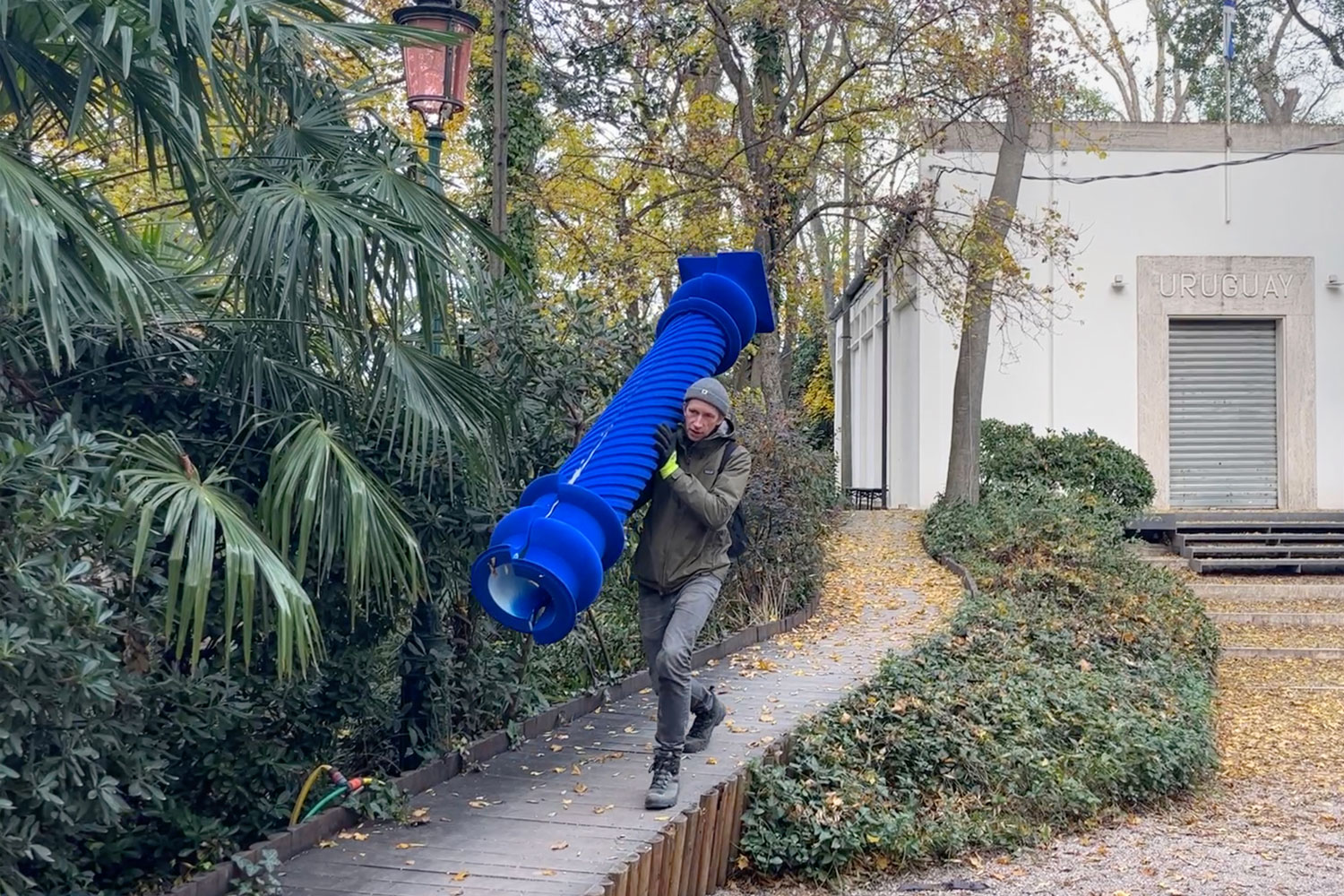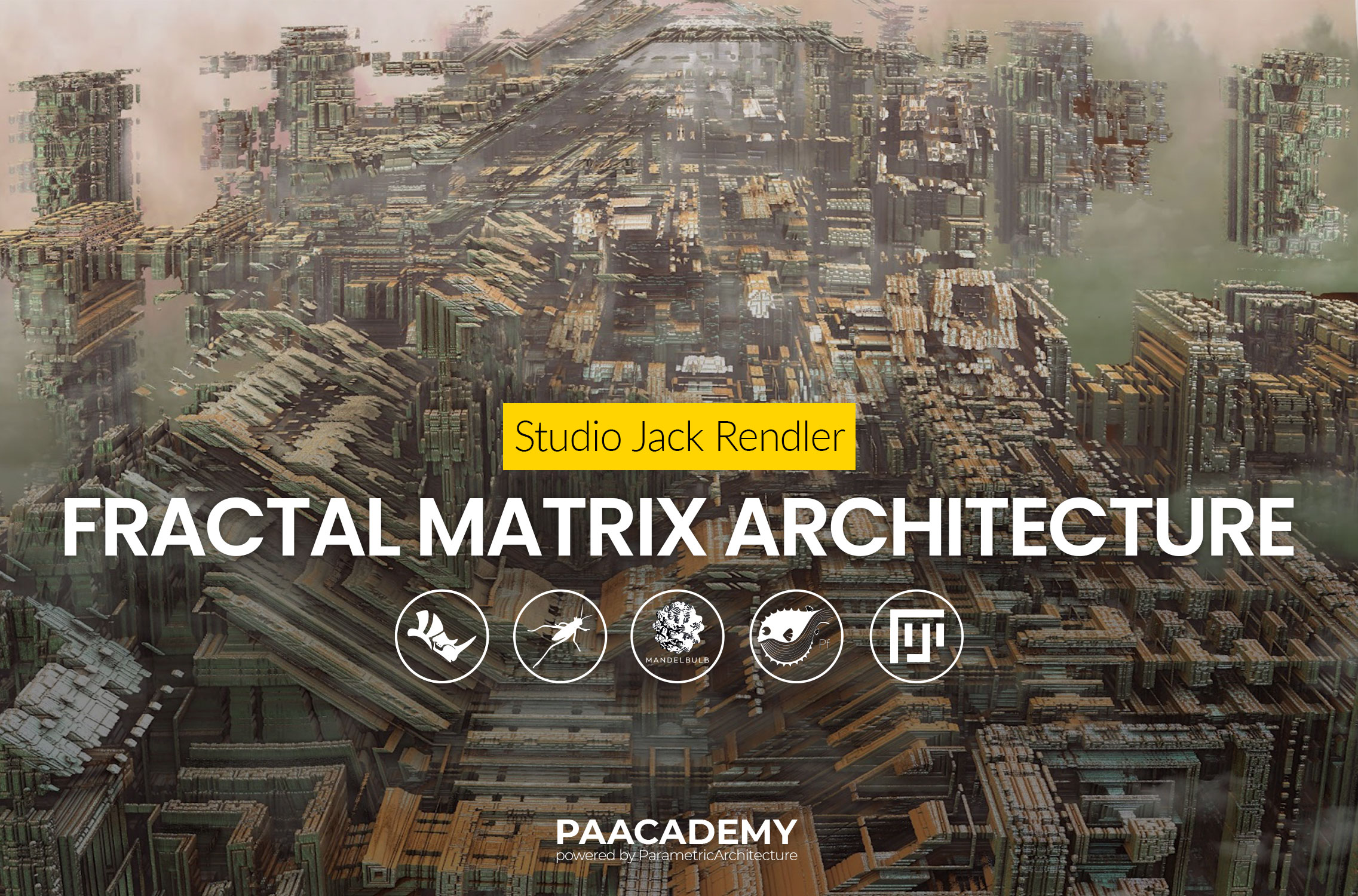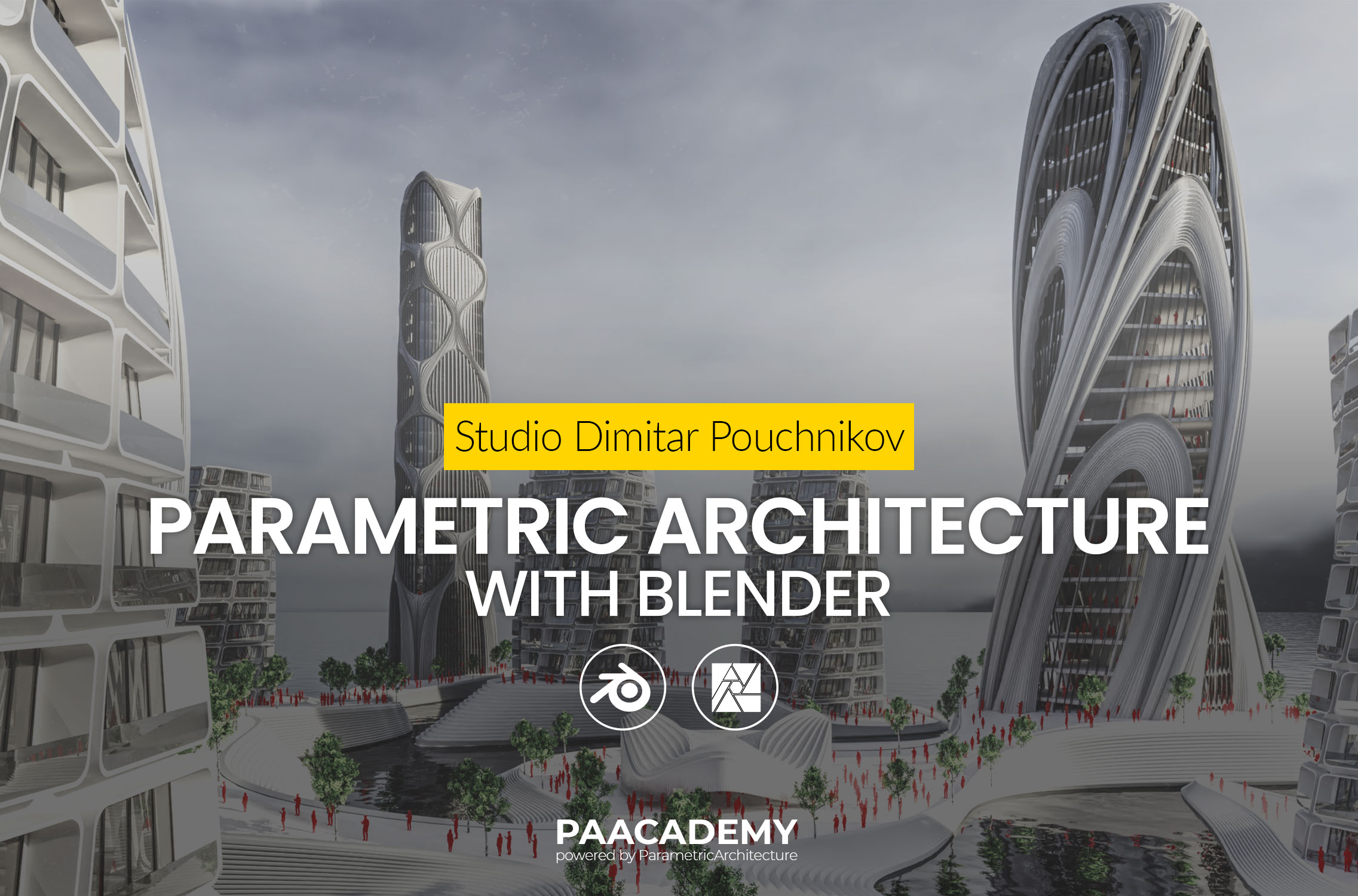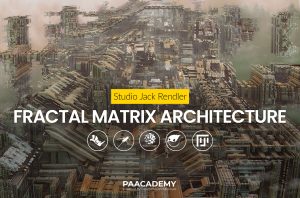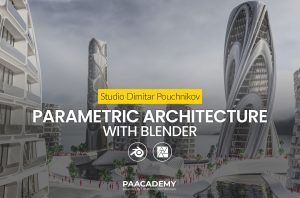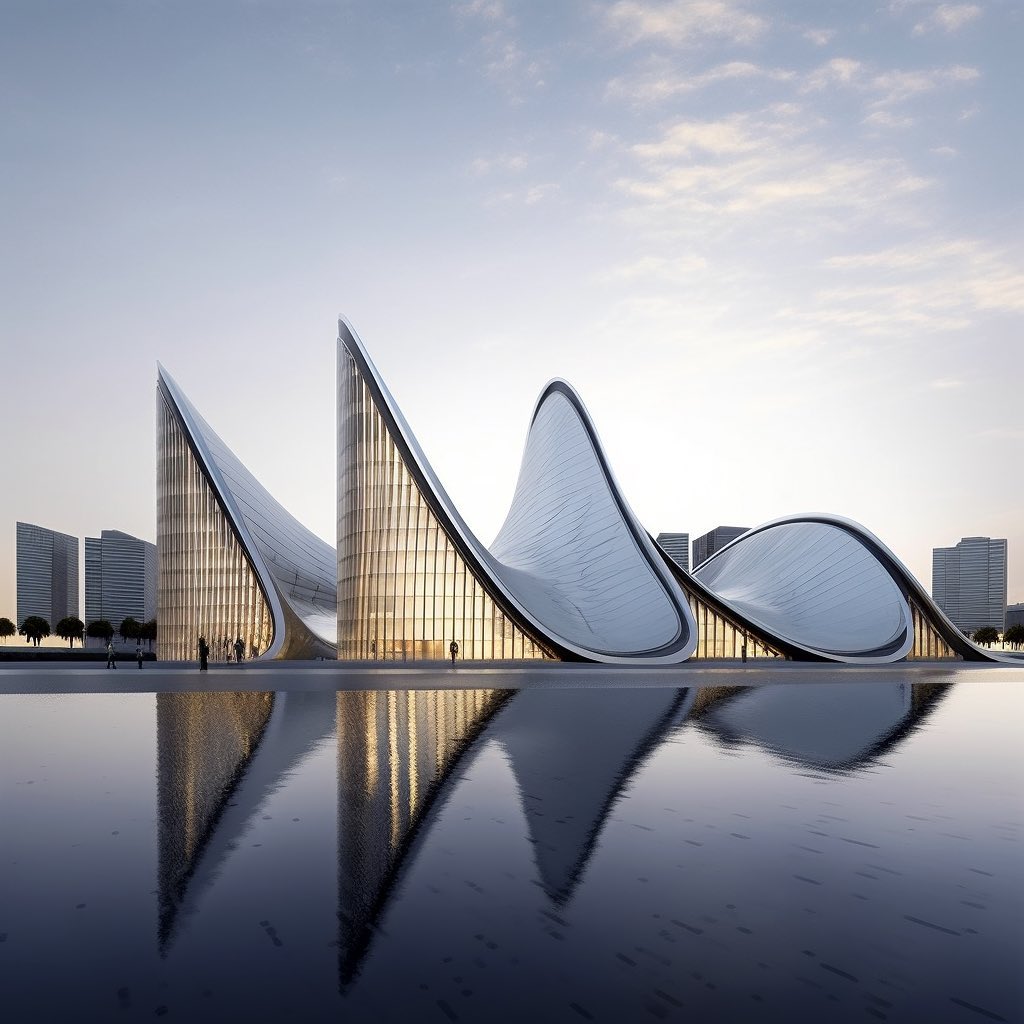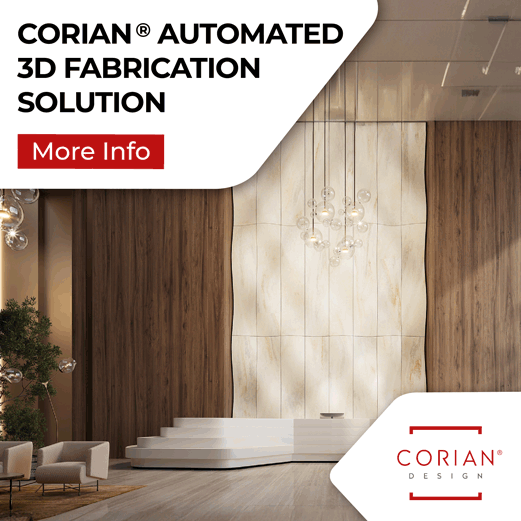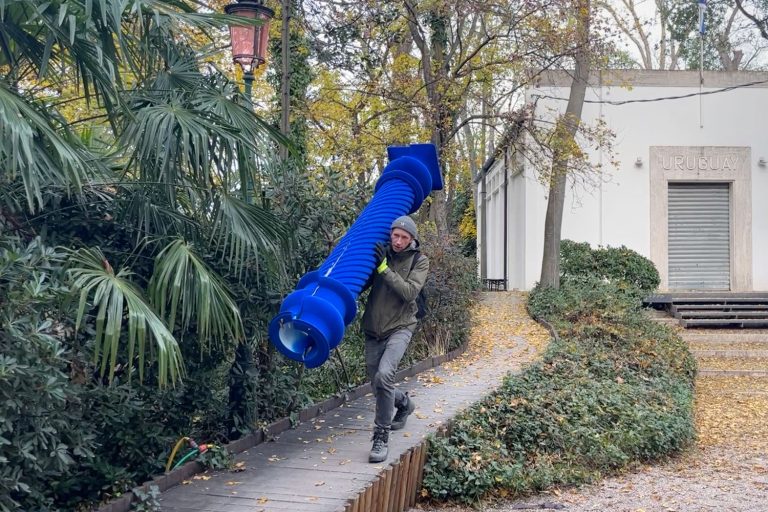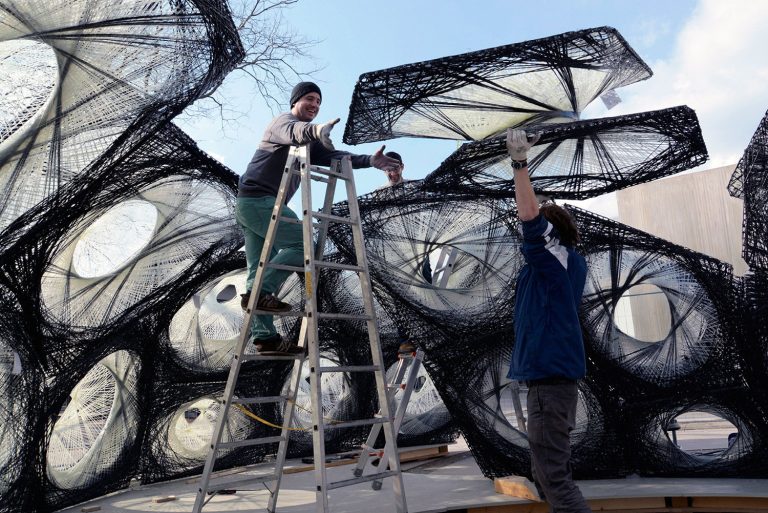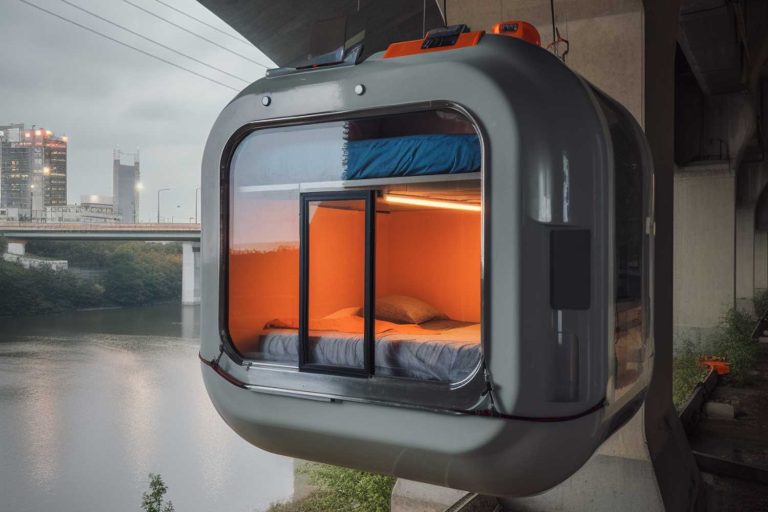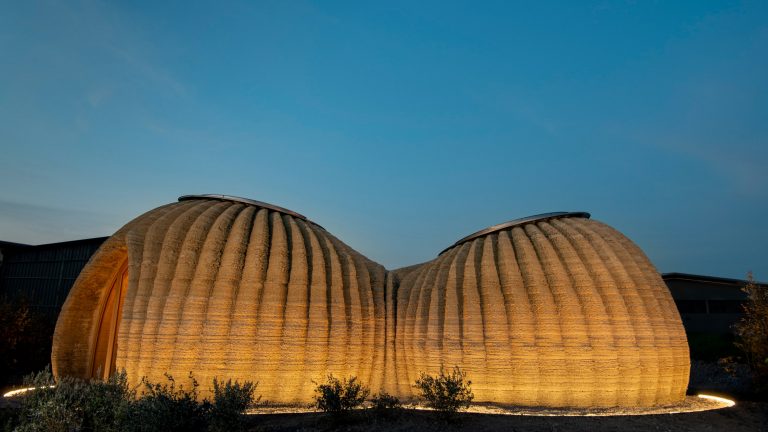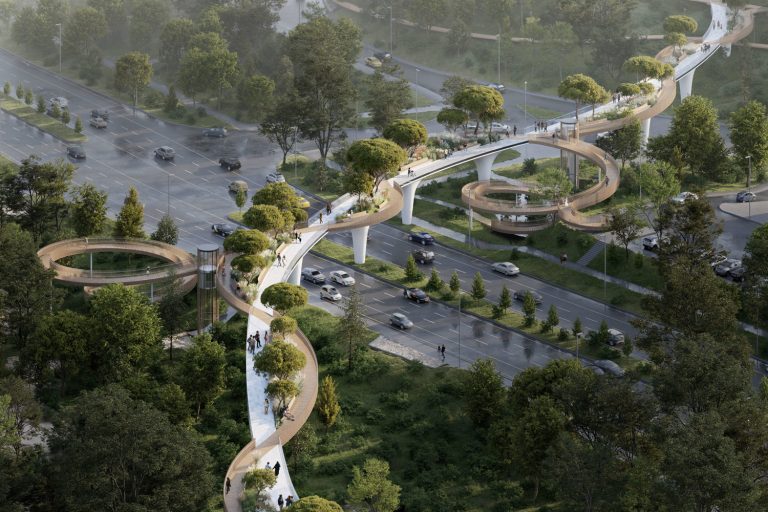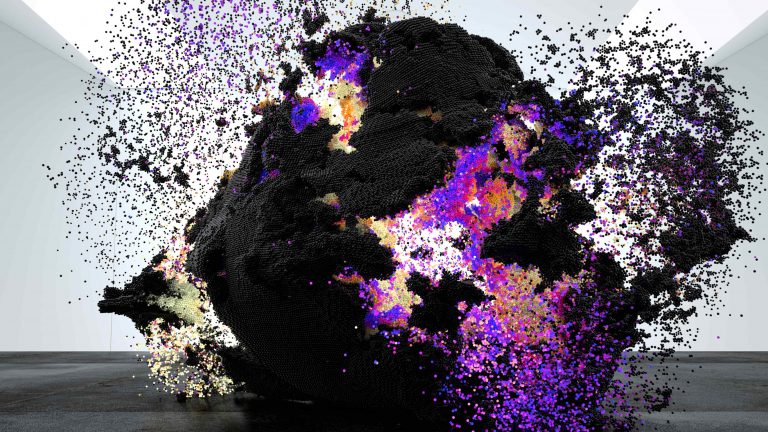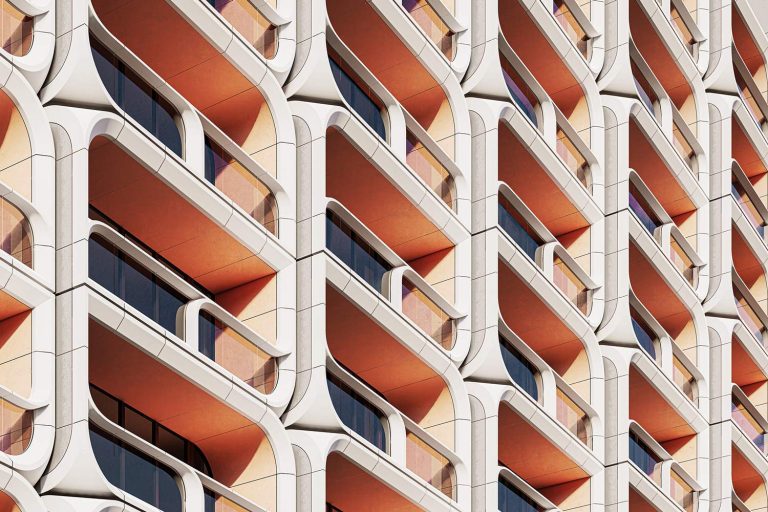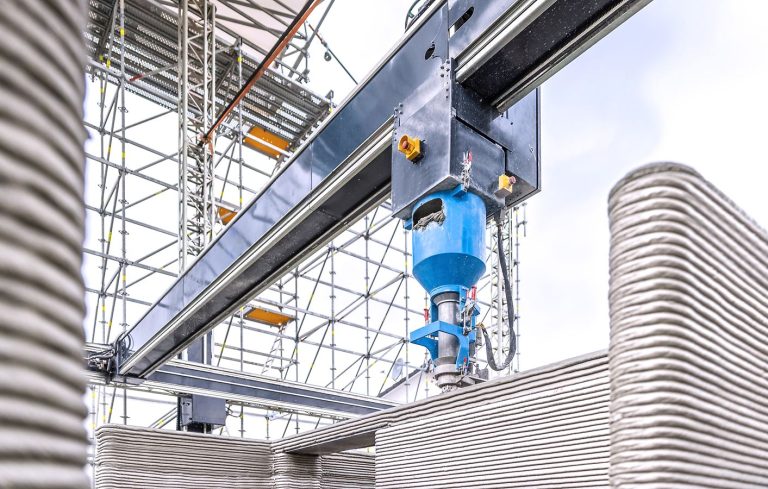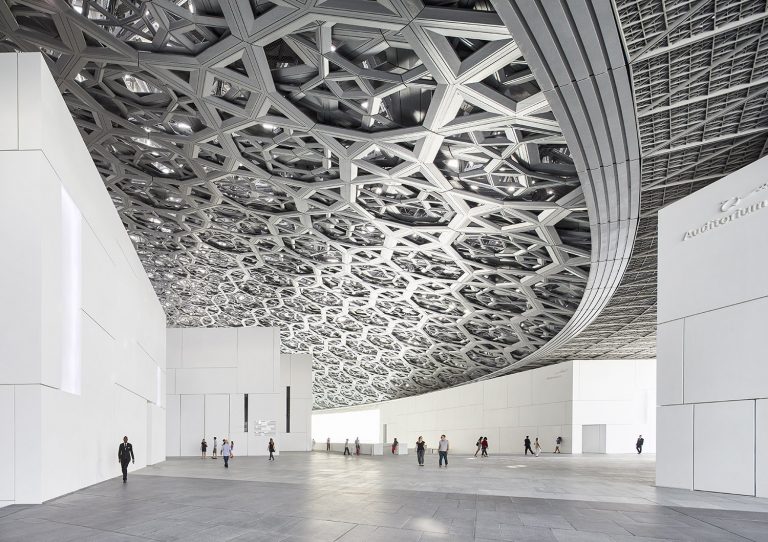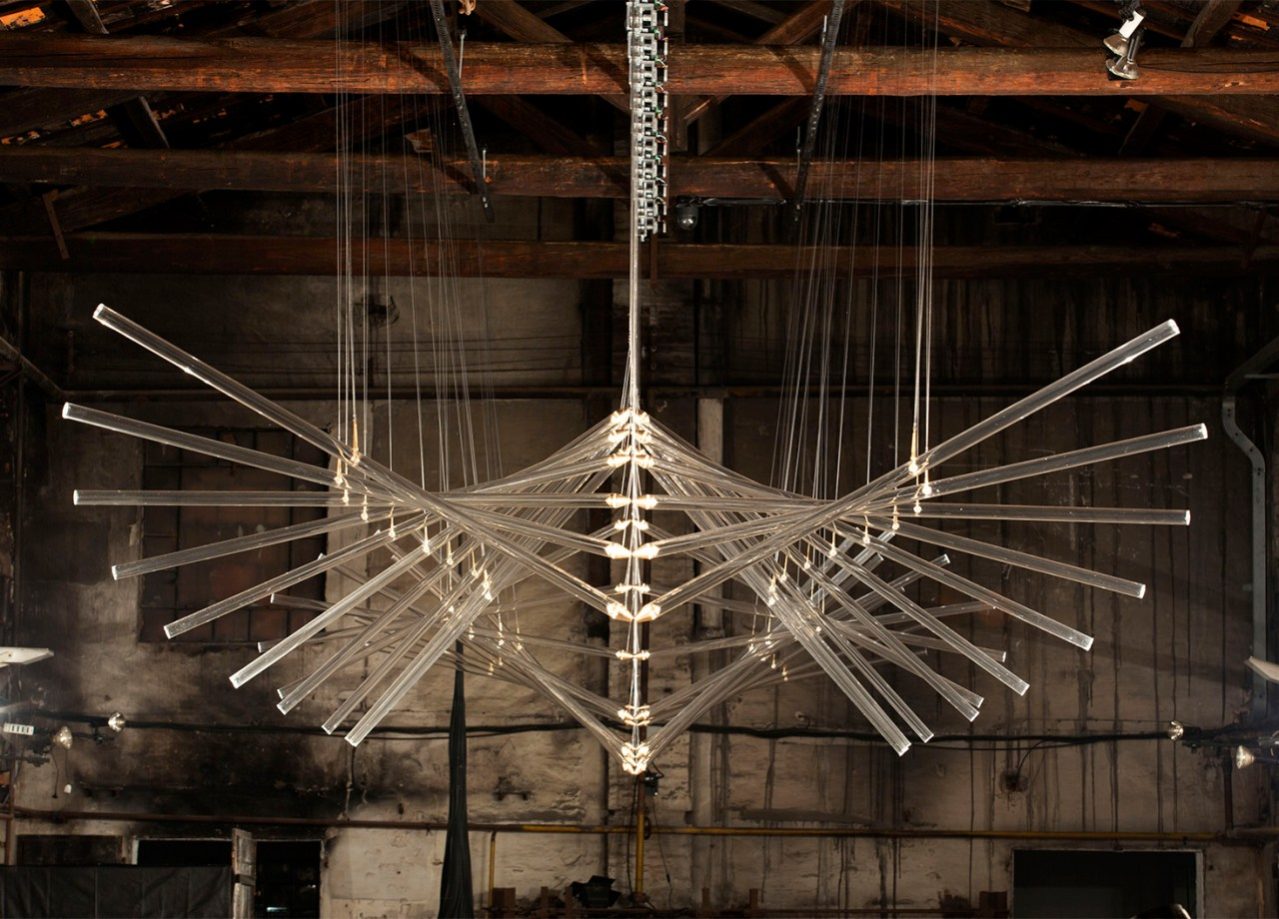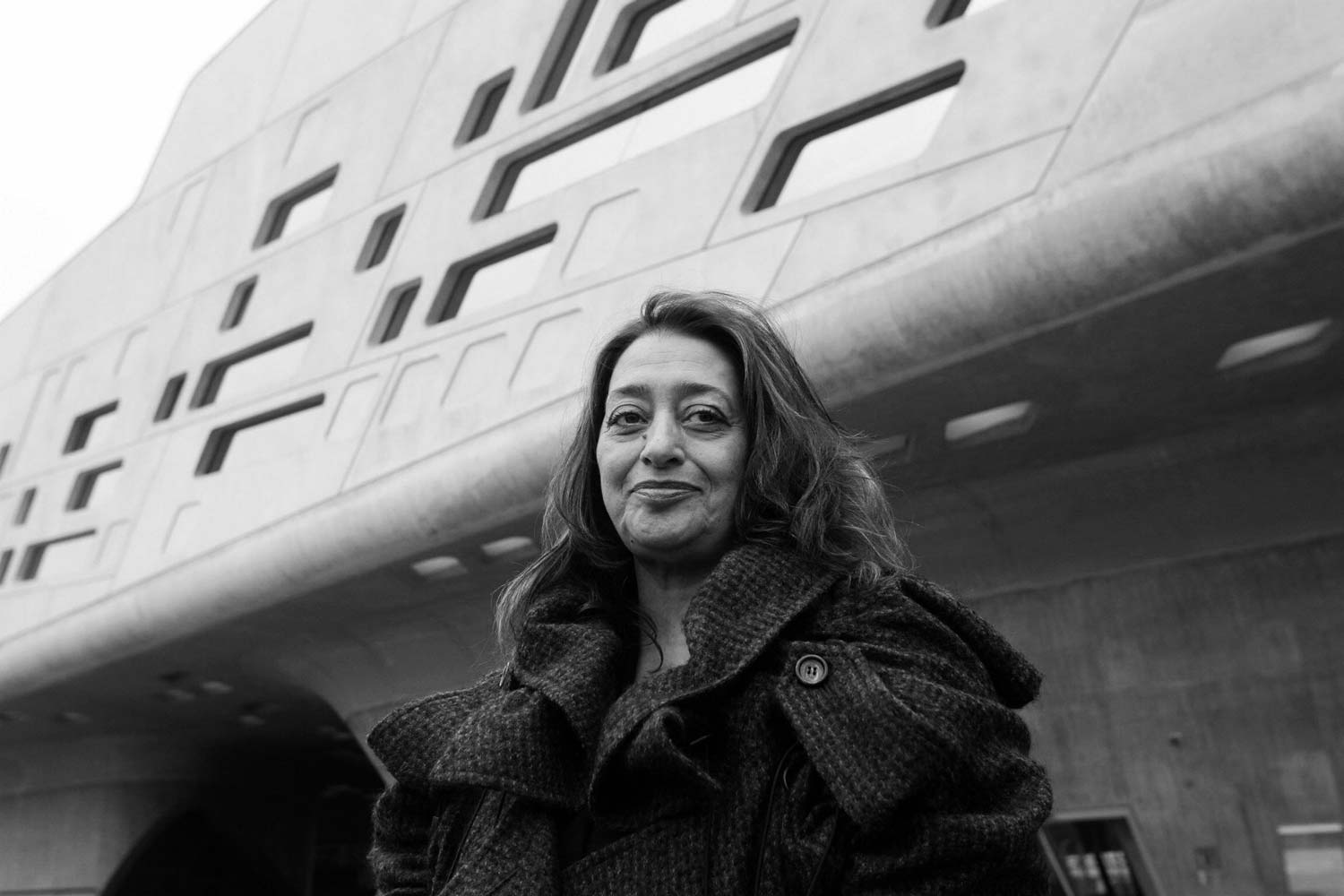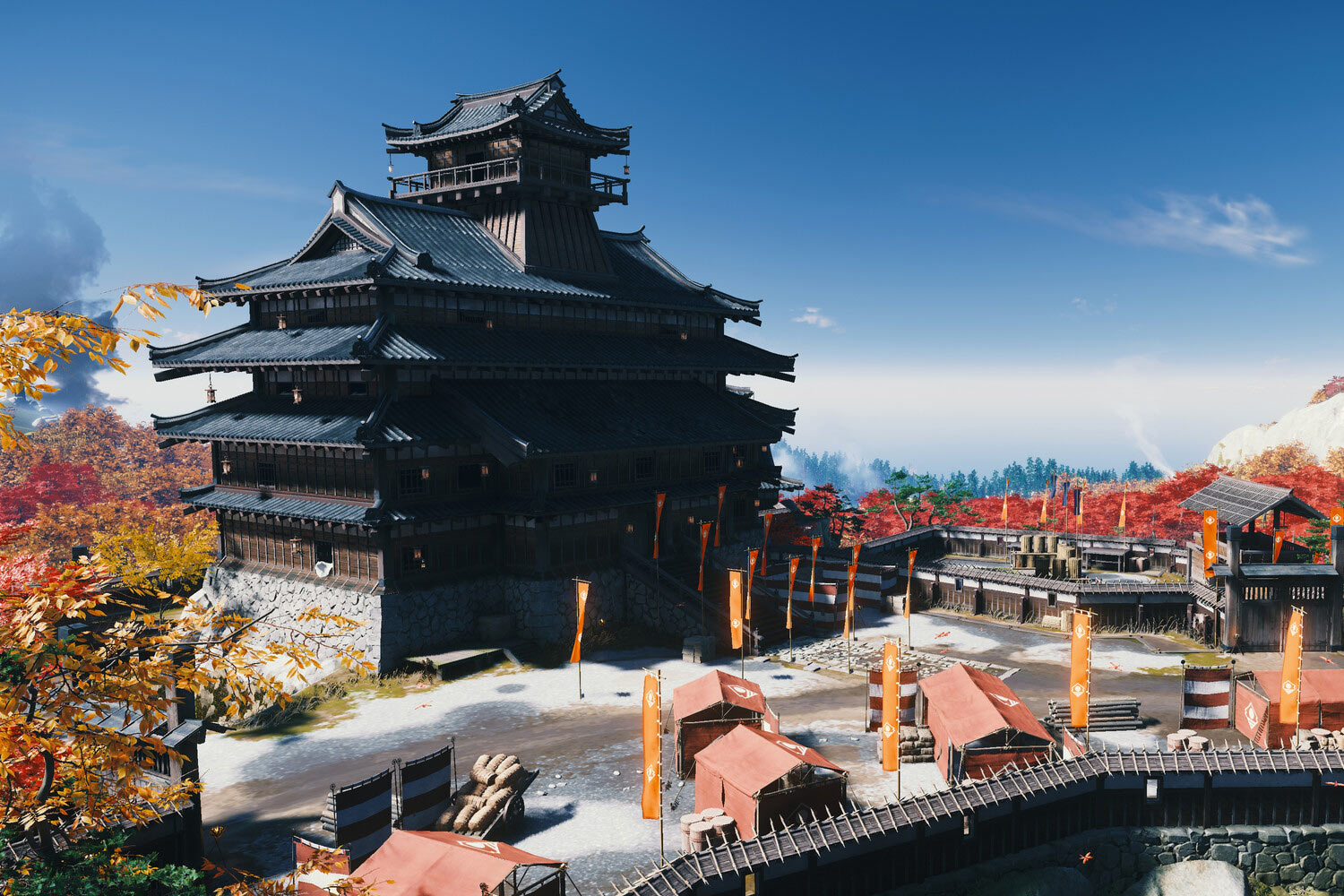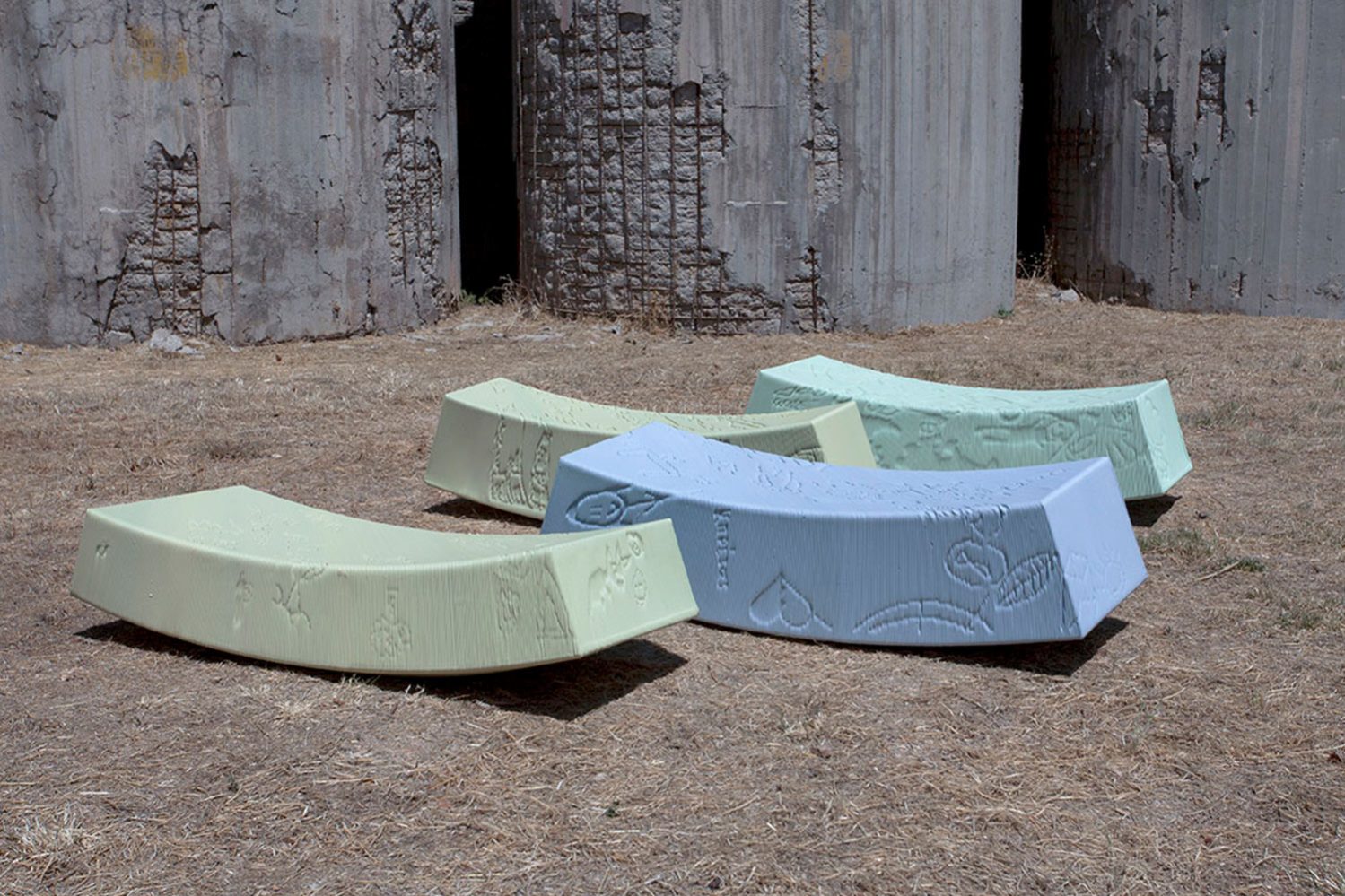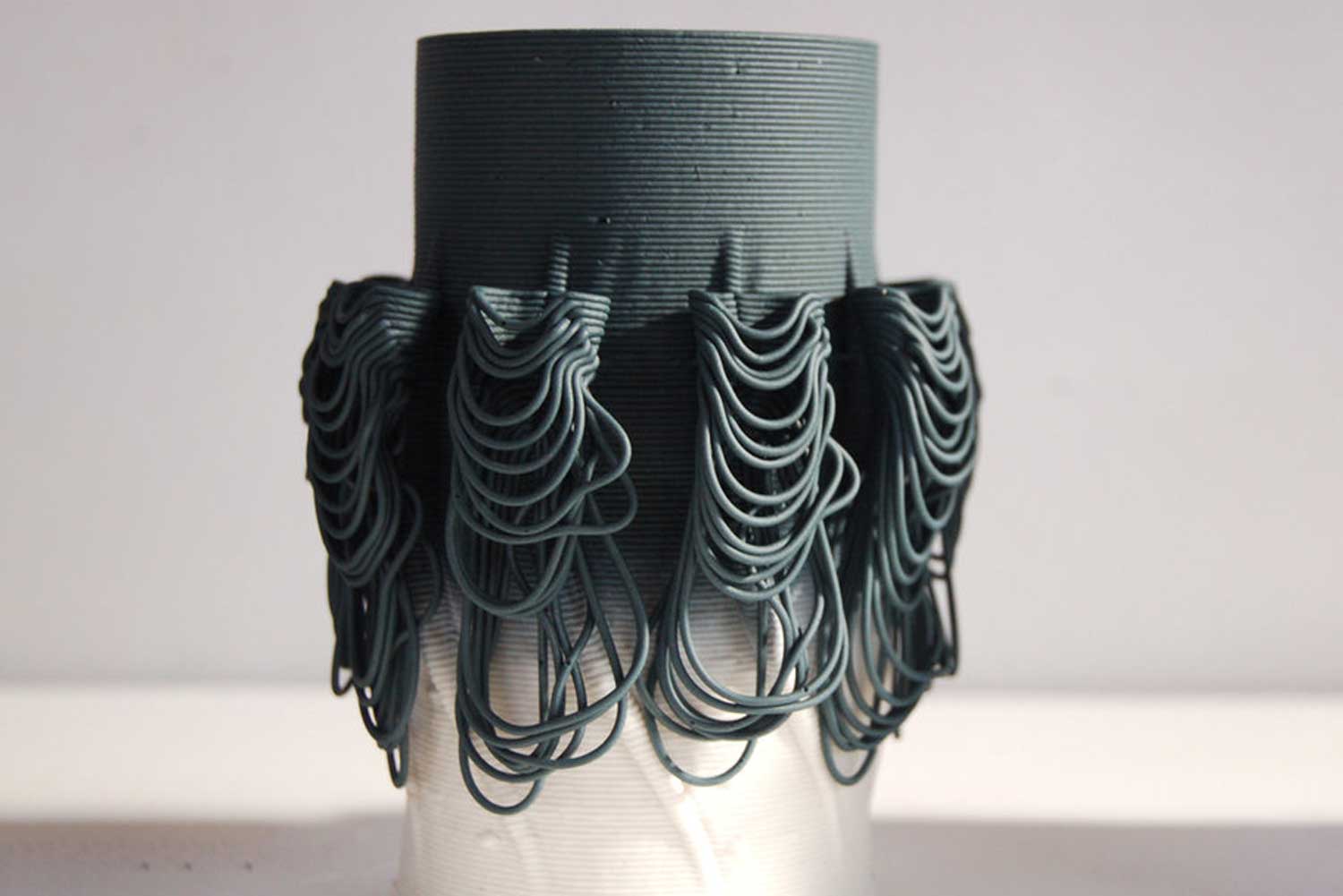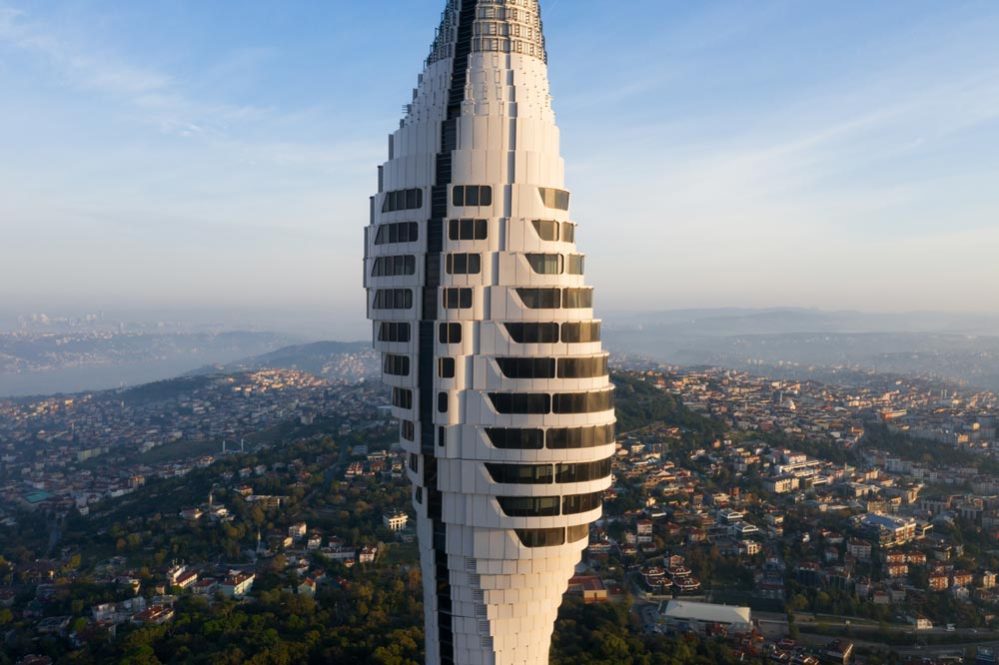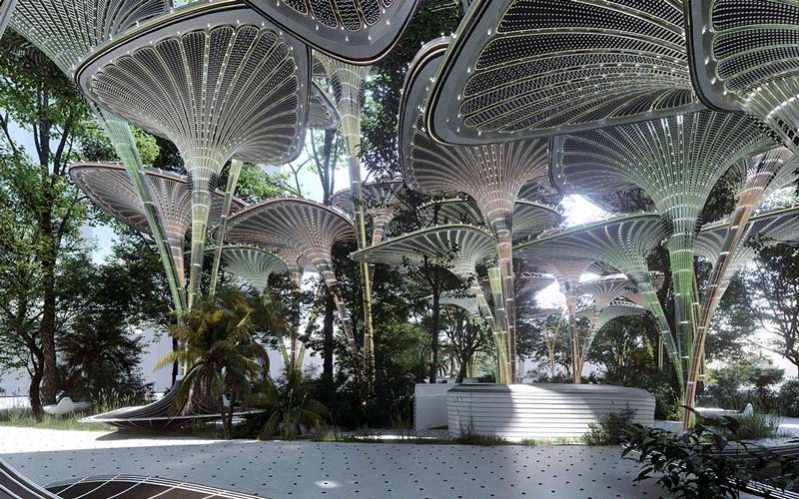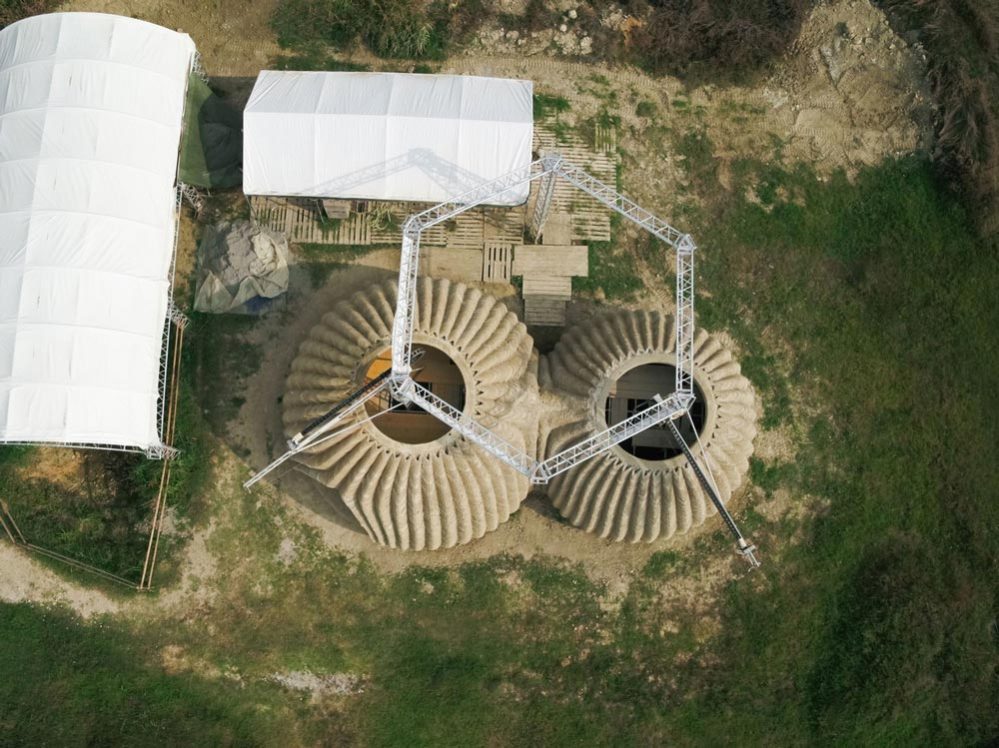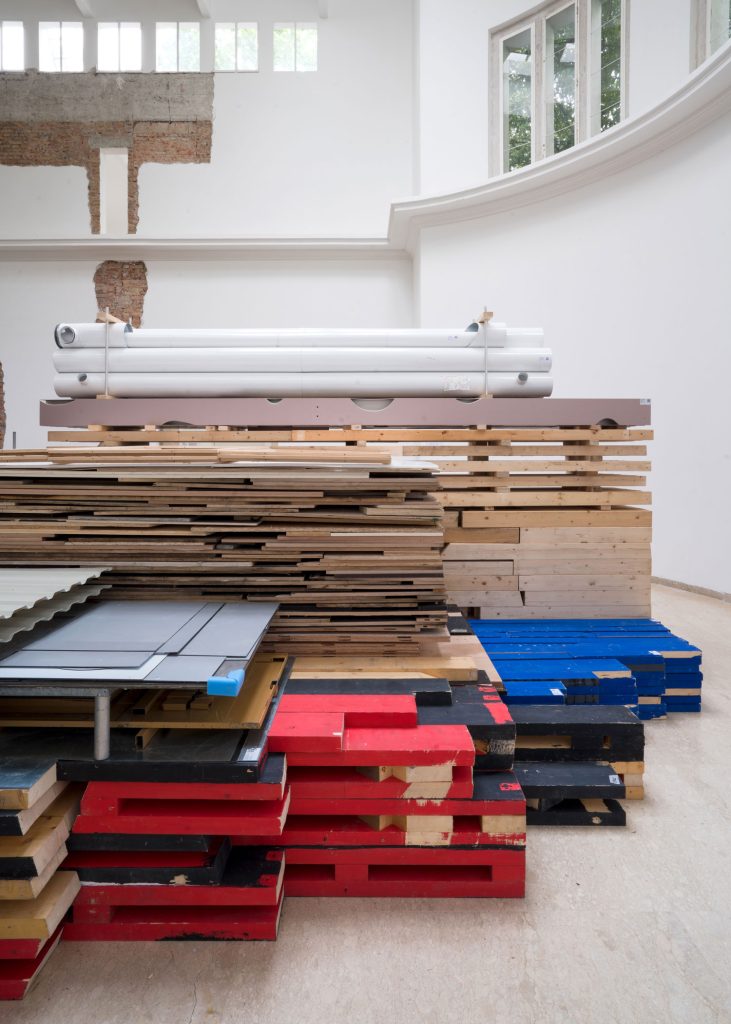
The German Pavilion at this year’s Venice Architecture Biennale 2023 has been unveiled under the name “Open for Maintenance – Wegen Umbau geöffnet.” The project, curated by ARCH+, SUMMACUMFEMMER, and BÜRO JULIANE GREB, is dedicated to the crucial themes of care, repair, and maintenance. The esteemed curatorial team includes architects Anne Femmer and Juliane Greb, media scholar Christian Hiller, architect and photographer Petter Krag, ARCH+ editor Melissa Angela Alemaz Makele, architectural theorist Anh-Linh Ngo, architect Florian Summa, and architect Franziska Gödicke, among others. The project is organized by a dedicated team consisting of Elke Doppelbauer, Nora Dünser, Mirko Gatti, Anna Hugot, Sascha Kellermann, Beatrice-Koch, Daniel Kuhnert, Arno Löbbecke, Victor Lortie, Vittorio Romieri, Barbara Schindler, Finn Steffens, and graphic design by Stan Hema, along with many more partners.
At the core of the German Pavilion lies the intriguing concept of “squatting and maintaining.” By taking over the existing Pavilion and integrating Maria Eichhorn’s previous work, “Relocating a Structure,” the curators have embraced the discourse surrounding sustainability, materiality, and economics. This approach highlights the importance of preservation and resource conservation while demonstrating the interconnectedness of ecological sustainability and societal well-being. The German Pavilion stands as a testament to the rich history of urban renewal and community conservation in Berlin, where the squatters’ movement in the 1970s and 1980s played a significant role in shaping a more considerate approach to architectural interventions.

The project seamlessly integrates the remnants of last year’s Biennale Arte, promoting a circular construction approach and offering alternative design possibilities for architecture. Reusing and repurposing leftover materials from national pavilions lends a unique cultural and creative value to the exhibition. This innovative initiative, aptly named “Open for Maintenance,” addresses the issue of excessive waste generated by biennales and provides a creative response to the resource problem. By incorporating materials from the previous year’s event, the German Pavilion embodies sustainability in action, encouraging a social renewal within the architectural sphere.
Building on the theme of “The Laboratory of the Future” curated by Lesley Lokko, the German contribution embraces the concept in a multifaceted manner. Inspired by Marco Baravalle’s call for “From Exhibition to Habitation,” the Pavilion transcends its role as a mere representation of the nation and transforms into a space for communal practices. Local needs and inclusivity take center stage, with built interventions oriented towards addressing specific societal challenges. The German Pavilion will serve as a productive infrastructure, collecting, cataloging, provisioning, and processing materials from the previous Biennale. It will also house an on-site workshop, inviting activist groups, universities, and initiatives to engage in one-on-one interventions and contribute to the maintenance of socio-spatial structures.
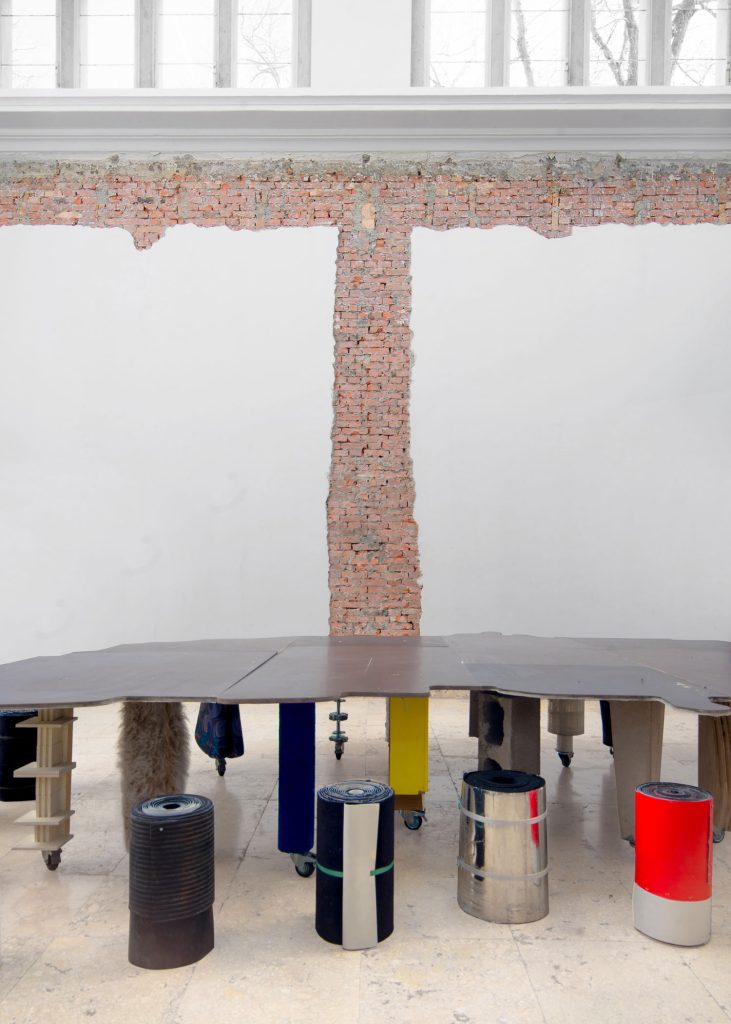
Open for Maintenance not only tackles resource-related concerns but also addresses issues of social and spatial inclusion in Venice. The project sheds light on the alarming number of empty and dilapidated public housing units in the city, coupled with the rising unaffordability for its residents. The commercialization of urban spaces through mass tourism and events has eroded everyday life and the networks of social and material maintenance vital for communal well-being. However, these challenges have also spurred numerous activist groups to take practical approaches to find solutions. The German Pavilion offers a platform for these actors to critically engage with the Biennale format and architecture as a discipline. A series of workshops, including the Maintenance 1:1 program in collaboration with Sto-Stiftung and AIT-Dialog, will host participants from universities, and vocational schools like Goethe Institut.



